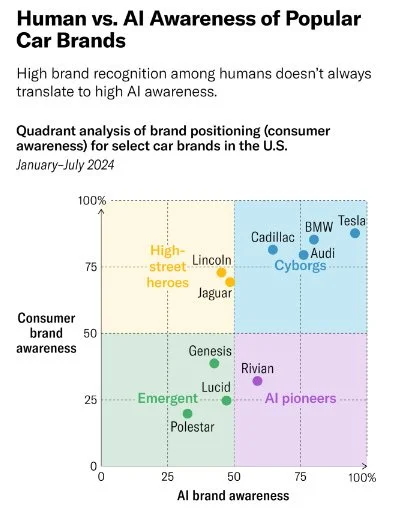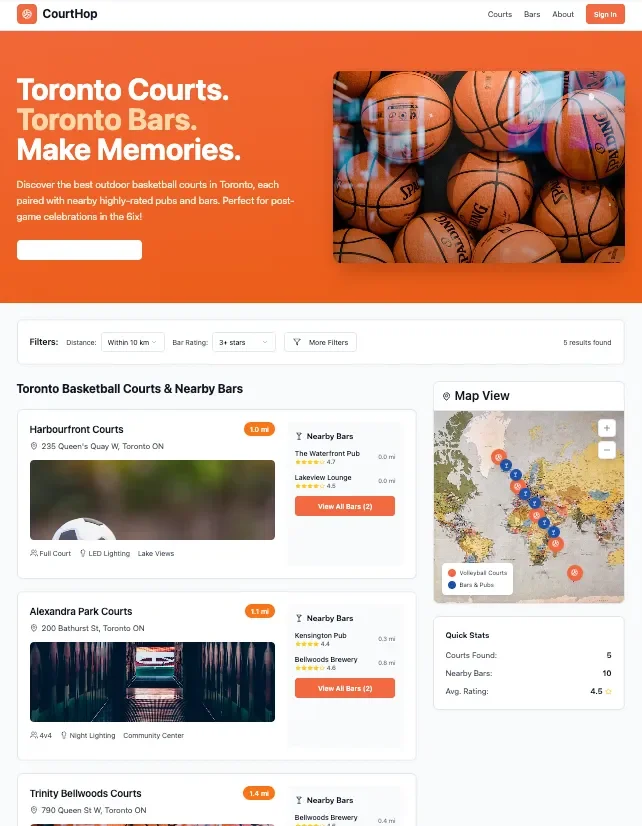Ben Evans noted in a recent presentation that marketing is one of the areas most impacted by AI so far. That’s because content development is subjective (more than one “answer” is acceptable), and errors are easy to spot. Adoption is high - recent studies show that 89.5% of marketers are using AI in some part of their processes, primarily to generate copy and images. In addition, 86% of marketers report saving time - on average, 4.74 hours per week.
So what does this actually look like within marketing teams? In startups, a new HubSpot study found that 69% have a dedicated AI lead or team. It reminds me of the early “Head of Digital” role - someone tasked with evangelizing and identifying opportunities before the rest of the company (hopefully) catches up. Unilever has reportedly set up a GenAI “assembly line” for creative production (a term I’m sure creative professionals find deeply inspiring). It’s leading to the production of more creative assets, at faster speeds, with stronger results - and putting more pressure on creative agencies.
Marketing leaders, including at Unilever, are careful to position GenAI as a tool to “help free up time for people to focus on the more human elements of the creative process.” Ok. But leaders need to be clearer about their true intentions, even if it makes people uncomfortable. Yes, we want to create more. Yes, we want to spend less. Yes, we want to reduce turnaround times. Yes, we want better results. And yes, we will use GenAI to help us do that - in ways that will impact roles and processes. Let’s get real.
AI & SEARCH
Are Google AI Overviews reducing traffic to publisher websites? Publishers certainly think so and have been voicing their complaints to Google. The head of Search at Google recently responded, saying that traffic is stable and that the quality of search traffic is actually increasing. She also shared an interesting insight: more traffic is going to “forums, videos, podcasts, and posts where they can hear authentic voices and first-hand perspectives.” Rather than just optimizing for keywords, perhaps publishers need to focus more on creating this kind of content.
It’s a bit of a tightrope for Google to walk. Features like AI Overviews are valuable to users who now expect ChatGPT-like answers and experiences. However, Google can’t alienate advertisers by encouraging users to rely solely on zero-click searches. Google’s new Web Guide feels like a middle ground—using AI to categorize website links rather than just summarize them. We’ll see if Google can continue to straddle this space between AI-generated responses and traditional website links—this approach feels a bit like a turducken.
In the meantime, more brands are working to increase their visibility within AI recommendation engines, in addition to general web search. HBR recently released a useful framework for measuring and optimizing your presence in LLMs. It’s interesting to see how platforms like ChatGPT are moving into the space Google has dominated for the past 20 years. OpenAI is reportedly developing a checkout feature that allows users to complete transactions within ChatGPT. I’m skeptical (see Meta’s attempts over the past 15 years), but there may be potential—especially if it integrates well with ChatGPT’s new agent that can complete tasks on your behalf. Could a ChatGPT agent hang out in a Ticketmaster waiting room and automatically buy the best concert tickets for me?
FRESH RESEARCH
AI Pulse Survey (EY): Despite the hype around agentic AI, only 14% of companies have implemented it. The top barriers are cybersecurity (35%) and data privacy (34%).
GenAI Data Exposure (Harmonic): A study on GenAI usage shows significant risks: 22% of uploaded files and 4% of prompts contained sensitive data. Files posed the greatest threat, driving the most severe PII exposure incidents.
Deloitte Global Gen Z & Millennial Survey 2025 (Deloitte): GenAI fears are shifting young people toward skilled trades—66% of Gen Z and 68% of millennials plan to pursue GenAI-resistant careers, up from 59% and 52% last year.
The Substack AI Report: Substack writers place high value on AI - on average, they’d pay $140/month to keep access. But the community is divided: users expect significant benefits to their work and careers over the next five years, while non-users believe it will be harmful. It feels like the early internet - you have to use it to understand the potential.
COOL BEANS
Robot Keytar Player: Ok, music made by AI isn’t cool. But a poorly disguised robot playing keytar on stage at a Chinese Music Festival is.
ChatGPT for Schoolwork: OpenAI has launched Study Mode to help students build critical thinking skills, rather than just get answers. Hopefully it’s used as intended. I’ve seen my own kids use ChatGPT in productive ways—like generating study guides or quizzes based on their material (though I suspect there are other uses they’re less inclined to tell their dad about).
AI-Powered App Builders: I’ve been tinkering with Replit and Lovable lately. As a non-coder, it’s wild how quickly you can prototype mobile apps using plain-language prompts. It’s helpful in my world to be able to quickly visualize an idea (even in a very basic way), instead of just describing it. Below is my latest: an app that helps me to find outdoor pickup basketball courts within walking distance of a bar for post-game beers. Might need to add a filter for nearby emergency rooms too.





